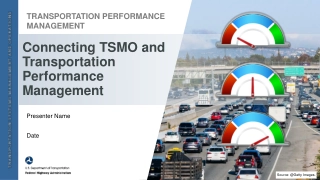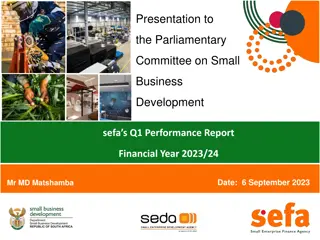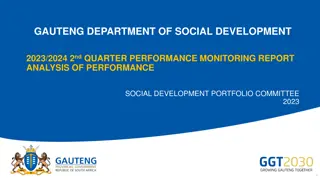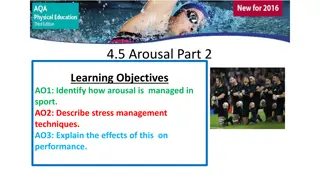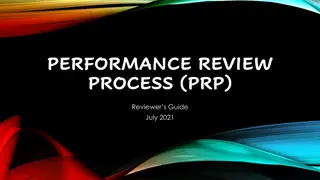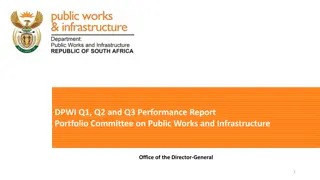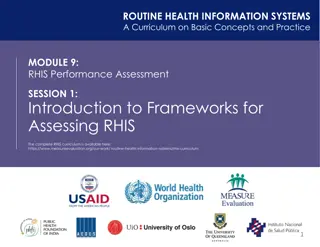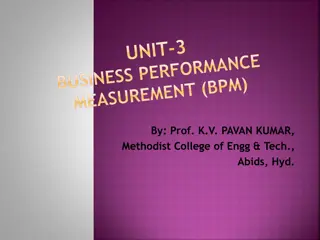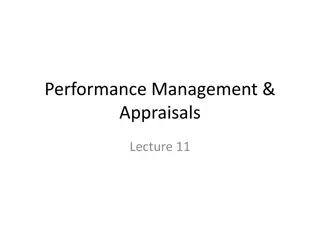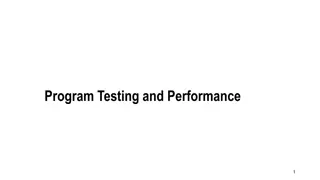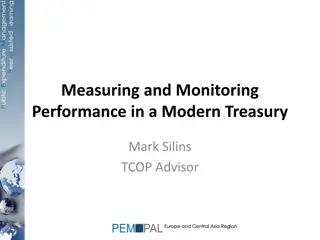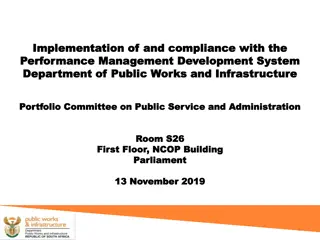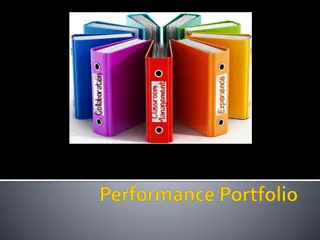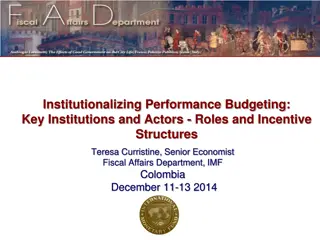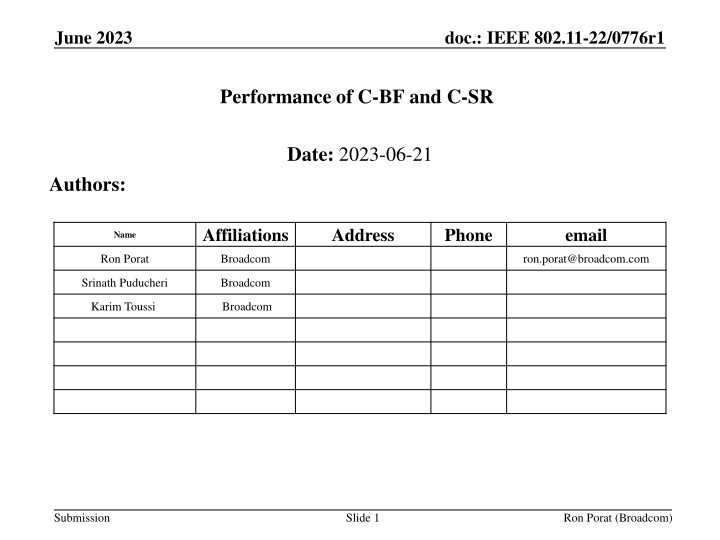
Performance Comparison of C-BF and C-SR for Spectral Efficiency Enhancement
Explore the performance results of two coordinated schemes, C-BF and C-SR, for improving spectral efficiency in joint transmission scenarios. Simulation data and assumptions are presented, along with insights on nulling techniques in C-BF and scenario analysis with multiple APs and STAs. The study delves into throughput ratios and gains across various configurations to enhance understanding of these schemes' effectiveness.
Download Presentation

Please find below an Image/Link to download the presentation.
The content on the website is provided AS IS for your information and personal use only. It may not be sold, licensed, or shared on other websites without obtaining consent from the author. If you encounter any issues during the download, it is possible that the publisher has removed the file from their server.
You are allowed to download the files provided on this website for personal or commercial use, subject to the condition that they are used lawfully. All files are the property of their respective owners.
The content on the website is provided AS IS for your information and personal use only. It may not be sold, licensed, or shared on other websites without obtaining consent from the author.
E N D
Presentation Transcript
June 2023 doc.: IEEE 802.11-22/0776r1 Performance of C-BF and C-SR Date: 2023-06-21 Authors: Affiliations Address Phone email Name Ron Porat Broadcom ron.porat@broadcom.com Srinath Puducheri Broadcom Karim Toussi Broadcom Submission Slide 1 Ron Porat (Broadcom)
June 2023 doc.: IEEE 802.11-22/0776r1 Introduction Previously analyzed joint transmission In this contribution added simulation results for two coordinated schemes that can improve spectral efficiency, namely C-BF and C-SR. Scenarios and methodology is taken from our JT simulations (e.g. 22/2188) Submission Slide 2 Ron Porat (Broadcom)
June 2023 doc.: IEEE 802.11-22/0776r1 Simulation Assumptions 2-AP (4x4), each with 1, 2 or 3 STA (2x2), and 4-AP each with 1 STA 80MHz BW, 11nD, SNR measured between STA and stronger AP ( serving AP ): range 10:35dB Path-loss differential X between stronger AP and weaker AP: range 0:30dB Baseline - single-AP (SU or MU-MIMO) + TDMA (implicitly assumes AP are not too far) C-SR both AP transmit at the same time with same power as in baseline (see Appendix A for discussion on maximizing sum capacity by maximizing Tx power). C-BF: as with C-SR with additional spatial nulling to reduce OBSS interference STA payload processing assumes knowledge of the per-tone interference for C-BF and C- SR with MMSE receiver (interference estimation during LTF of coordinated PPDU) Genie MCS prediction: assuming full CSI, precoder knowledge and MMSE Rx, for both CBF and CSR (CBF: similar to DL MUMIMO, CSR: beyond just RSSI/path-loss info) Generic impairments: as in our JT sims in 22/2188, e.g. Channel aging (-30dBc) NDP channel estimation error (no smoothing). Simulation output: Throughput ratio (C-BF/baseline, C-SR/baseline) shown in a 2-D table: f(SNR, X). Each cell has C-BF results (on top), C-SR (bottom) and gains for different total Nss values. Submission Slide 3 Ron Porat (Broadcom)
June 2023 doc.: IEEE 802.11-22/0776r1 Notes on Nulling in C-BF With 2x2 STA we can fully null a signal towards the STA s two antennas or partially null in one certain direction With 4x4 AP full nulling is quite limited (e.g. null towards one OBSS STA and transmit towards one BSS STA) partial nulling provides a lot more options to use C-BF and higher gains as shown in the simulation results For partial nulling used joint sounding for accurate precoder calculation (see Appendix B) Simulations used an MMSE precoder more suitable than ZF since MMSE de-weights the nulling based on I+N and enables higher BF gain. Submission Slide 4 Ron Porat (Broadcom)
June 2023 doc.: IEEE 802.11-22/0776r1 Scenario 1 - Two AP, One STA per AP - Baseline Nss = [1], [2] - Nss = 2 best for SNR >= 20dB, Nss = 1 best for SNR <= 15dB - CBF/CSR Nss = [1; 1], [2; 2] - A total of 2ss or 4ss across AP Submission Slide 5 Ron Porat (Broadcom)
June 2023 doc.: IEEE 802.11-22/0776r1 Scenario 1 - Tput Ratios Throughput ratio for C-BF and C-SR with a total of [2ss, 4ss] (higher number in bold), (red C-BF>1.1xC-SR) Serving AP STA SNR (dB) 35 30 25 20 15 10 1.17, 1.19 1.13, 0.09 1.18, 1.34 1.14, 0.27 1.19, 1.41 1.15, 0.47 1.19, 1.47 1.15, 0.82 1.19, 1.58 1.17, 1.24 1.19, 1.72 1.18, 1.46 1.19, 1.85 1.19, 1.76 1.18, 1.12 1.10, 0.10 1.21, 1.26 1.11, 0.30 1.23, 1.36 1.13, 0.53 1.24, 1.47 1.14, 0.90 1.24, 1.55 1.16, 1.33 1.25, 1.63 1.21, 1.57 1.29, 1.76 1.27, 1.73 1.33, 0.99 1.19, 0.11 1.33, 1.10 1.20, 0.38 1.35, 1.25 1.22, 0.64 1.35, 1.48 1.26, 1.02 1.35, 1.66 1.31, 1.52 1.35, 1.86 1.35, 1.83 1.35, 0.85 1.25, 0.13 1.35, 0.95 1.27, 0.47 1.35, 1.10 1.30, 0.78 1.35, 1.32 1.34, 1.12 1.39, 1.58 1.38, 1.53 1.47, 1.82 1.46, 1.81 1.80, 0.79 1.45, 0.13 1.80, 0.99 1.53, 0.59 1.81, 1.20 1.68, 1.02 1.86, 1.41 1.82, 1.36 1.91, 1.54 1.91, 1.53 1.63, 0.42 1.33, 0.03 1.68, 0.72 1.50, 0.46 1.84, 1.01 1.73, 0.96 1.98, 1.26 1.96, 1.24 0 5 10 X 15 (dB) 20 25 30 Large difference of AP-STA paths loss relative to SNR Submission Slide 6 Ron Porat (Broadcom)
June 2023 doc.: IEEE 802.11-22/0776r1 Observations (1) C-SR works well when X>=SNR (or SNR-5 in some cases) not exactly a function of AP-AP separation AP1 AP2 SNR SNR-X SNR from AP2<=0dB STA Logic when the interference from AP2 is at the noise level or below In the particular case of C-SR with Nss=[1; 1] the STA is able to cancel the rank-1 interference (note the stable gain at any X and SNR) That is one benefit of synchronization when compared to 11ax style opportunistic SR Submission Slide 7 Ron Porat (Broadcom)
June 2023 doc.: IEEE 802.11-22/0776r1 Observations (2) C-BF shows particular strong gain for SNR<=15dB because the baseline only supported Nss=1 so potential for doubling with C-BF C-BF provides significantly higher rates than C-SR for X<=SNR-10 AP1 AP2 SNR SNR-X SNR from AP2 > =10dB STA Logic when the interference from AP2 is strong enough for nulling to provide benefit Submission Slide 8 Ron Porat (Broadcom)
June 2023 doc.: IEEE 802.11-22/0776r1 Scenario 2 - Two AP, Two STA per AP - Baseline Nss = [1], [2], [1 1], [2 1] - Nss = [2 1] best for SNR >= 25dB, Nss = [1 1] best for SNR <= 20dB - C-SR Nss = [1; 1], [1 1; 1 1], [2 1; 2 1] - C-BF: Nss = [1; 1], [1 1; 1 1] (with C-BF limited to a total of Nss=4) Submission Slide 9 Ron Porat (Broadcom)
June 2023 doc.: IEEE 802.11-22/0776r1 Scenario 2 - Tput Ratios Throughput ratio for C-BF and C-SR with a total of [2ss, 4ss, 6ss] (higher number in bold), (red C-BF>1.1xC-SR) Serving AP STA SNR (dB) 35 30 25 20 15 10 0.96, 1.16 <1 0.97, 1.25 <1 0.98, 1.32 <1 0.98, 1.41 <=1 0.98, 1.49 0.96, 1.22, 1.21 0.98, 1.55 0.97, 1.45, 1.58 0.98, 1.63 0.98, 1.59, 1.79 0.99, 1.23 <1 1.02, 1.30 <1 1.03, 1.34 <1 1.04, 1.39 0.96, 1.14, 0.88 1.04, 1.51 0.98, 1.35, 1.30 1.05, 1.66 1.02, 1.57, 1.68 1.08, 1.75 1.07, 1.74, 1.90 1.12, 1.28 <=1 1.13, 1.39 <=1 1.14, 1.49 <=1 1.14, 1.59 1.07, 1.38, 1.03 1.14, 1.68 1.11, 1.62, 1.46 1.14, 1.77 1.14, 1.75, 1.82 1.14, 1.92 1.14, 1.91, 1.98 1.07, 1.05 <1 1.06, 1.19 <=1 1.06, 1.38 1.02, 1.09, 0.73 1.06, 1.60 1.05, 1.46, 1.08 1.10, 1.79 1.09, 1.74, 1.38 1.16, 1.92 1.15, 1.91, 1.58 1.40, 1.08 1.13, 0.76, 0.18 1.40, 1.22 1.19, 1.04, 0.48 1.40, 1.45 1.30, 1.34, 0.91 1.44, 1.76 1.41, 1.71, 1.21 1.48, 1.88 1.48, 1.87, 1.42 1.39, 1.15 1.13, 0.92, 0.20 1.43, 1.43 1.27, 1.35, 0.44 1.56, 1.62 1.47, 1.63, 0.82 1.68, 1.80 1.67, 1.86, 1.06 0 5 10 X 15 (dB) 20 25 30 Large difference of AP-STA paths loss relative to SNR Submission Slide 10 Ron Porat (Broadcom)
June 2023 doc.: IEEE 802.11-22/0776r1 Observations In this case the baseline never drops to SU Nss=1 so gains of both C-SR and C-BF are not as high for SNR=10 and 15dB For C-SR Nss = [2 1; 2 1] is best only for SNR >= 25dB and X >= 25dB. Otherwise, Nss = [1 1; 1 1] is mostly best. However note unlike scenario 1 the interference is not rank-1 so STA can t completely null it As in the previous scenario C-BF is better than C-SR in the top left triangle, meaning X<=SNR-10 or 15 ( SNR from AP2 is at least 10 or 15dB) Notes: For C-BF we also simulated the case of limiting to two STA with full rank nulling but the gains were much lower (see Appendix C) high benefit for partial-rank nulling The scenario with 3STA per AP is in Appendix D gains are more muted but still exist for C-BF even at low values of X Submission Slide 11 Ron Porat (Broadcom)
June 2023 doc.: IEEE 802.11-22/0776r1 Scenario 3 - Four AP, one STA per AP - Baseline Nss = [1], [2] - Nss = 2 best for SNR >= 20dB, Nss = 1 best for SNR <= 15dB - C-SR Nss = [1; 1], [1; 1; 1], [1; 1; 1; 1], [2; 2; 2; 2] - C-BF: Nss = [1; 1], [1; 1; 1], [1; 1; 1; 1] Submission Slide 12 Ron Porat (Broadcom)
June 2023 doc.: IEEE 802.11-22/0776r1 Scenario 3 - Tput Ratios Throughput ratio for C-BF and C-SR with a total of [2ss, 3ss, 4ss, 8ss] (higher number in bold and x denotes lower number), (red C-BF>1.2xC-SR, 1.1xC-SR) Serving AP STA SNR (dB) 35 30 25 20 15 10 x, 1.42, 1.42 1.13, 0.34, x, x 1.10, 0.38, x, x 1.19, 0.48, x, x 1.25, 0.61, x, x 1.45, 0.89, x, x 1.33, 1.15, x, x x, 1.54, 1.63 x, 1.58, 1.61 x, 1.70, 1.76 1.14, 0.61, x, x 1.11, 0.67, x, x 1.20, 0.82, x, x 1.27, 0.98, x, x 1.53, 1.34, x, x x, 1.67, 1.68, x x, 1.63, 1.79 x, 1.61, 1.69 x, 1.75, 1.91 1.15, 0.92, x, x 1.13, 1.01, x, x 1.22, 1.24, x, x x, 1.47, 1.36, x x, 1.92, 1.90, x x, 2.12, 2.41, x x, 1.68, 1.88 x, 1.63, 1.87 x, 1.81, 2.02 1.15, x, 1.25, x x, 1.25, 1.39, x x, 1.51, 1.70, x x, 1.84, 2.08, x x, 2.47, 2.76, x x, 2.76, 3.05, x x, 1.72, 1.96 x, 1.66, 2.06 x, 1.92, 2.21 x, x, 1.54, 1.42 x, x, 1.69, 1.55 x, x, 2.04, 1.85 x, x, 2.56, 2.12 x, 2.79, 3.48, x x, 1.77, 2.10 x, 1.73, 2.14 x, 2.00, 2.52 x, x, 1.89, 2.33 x, x, 2.07, 2.51 x, x, 2.42, 2.90 x, x, 2.68, 3.00 x, 1.79, 2.31 x, 1.83, 2.30 x, 2.03, 2.69 x, x, 2.15, 2.86 x, x, 2.23, 3.12 x, x, 2.68, 3.62 x, 1.52, 1.51 x, 1.63, 1.60 x, 1.84, 1.45 1.80, 1.95, x x, 1.82, 1.67 0 x, 1.87, 1.71 x, 2.07, 1.86 x, 1.95, 2.08 5 x, 1.92, 2.07 x, 2.30, 2.39 x, 2.27, 2.55 10 X x, 1.98, 2.38 x, 2.59, 2.98 x, 2.81, 3.15 15 (dB) x, 2.01, 2.62 x, 2.81, 3.54 20 x, 2.10, 2.68 25 30 Large difference of AP-STA paths loss relative to SNR Submission Slide 13 Ron Porat (Broadcom)
June 2023 doc.: IEEE 802.11-22/0776r1 Observations The case of 4AP with one stream per STA exhibits even higher gains for C- BF. Compared to scenario 1 the baseline performance is the same (1 STA per AP) but the STA needs to decode 2ss in scenario 1 versus 1ss in scenario 3 Compared to scenario 2 there are the same total number of STA and the difference is 2AP vs. 4AP: In scenario 2 each AP splits its power between 2 STA but in scenario 3 full power goes into one STA The baseline in scenario 2 (2 STA per AP) is higher which means lower gains In scenario 3 there are more total, across AP, antennas which can improve diversity Submission Slide 14 Ron Porat (Broadcom)
June 2023 doc.: IEEE 802.11-22/0776r1 Summary We have provided simulation results for both C-BF and C-SR. For C-SR gains are essentially dependent on the relative separation of a STA from its BSS vs. the OBSS. We observe that gains increase significantly as X crosses a threshold for mid to high SNR Gains will diminish if AP-AP link level <-82dBm as baseline isn t TDMA anymore For C-BF the two main observations are: With 4x4 AP and 2x2 STA it s important to enable partial nulling to maximize the benefit of this technology Compared to C-SR, benefit is seen when the SNR to the OBSS is at least 10dB enabling the gains from spatial nulling strong and consistent gains in this region For both schemes interference nulling at the STA improves performance Submission Slide 15 Ron Porat (Broadcom)
June 2023 doc.: IEEE 802.11-22/0776r1 Appendix A Sum Capacity of 2AP C-SR C-SR - Unlike other presentations we don t have excess (above highest MCS) SNR reduction in power = reduction in interference and desired signal equally Plots below assume AP1 power normalized to 1. If AP2 power = 0 TDMA, if AP2 power = 1 simulated in this contribution. Sum capacity (yellow) always maximized at either TDMA or AP2 power = 1, any AP2 power level in between leads to reduced sum capacity. If X<=SNR/2 (in dB) TDMA is optimal, can be extended to N AP: X <= SNR/N + ~10*log10(N-1). Submission Slide 16 Ron Porat (Broadcom)
June 2023 doc.: IEEE 802.11-22/0776r1 Appendix B CBF with Joint vs. Sequential Sounding For a given STA: Joint USV (e.g. 2x8) Sequential U1S1V1 (e.g. 2x4) AP1 AP2 AP1 STA STA Sequential U2S2V2 (e.g. 2x4) AP2 As in DL MU-MIMO feeding back global S and V is optimal STA If only part of SiVi are used for BF or Nulling, feeding back per-AP SiVi is suboptimal due to loss of info in U1 and U2. Can be solved with feedback of U1 U2 Submission Slide 17 Ron Porat (Broadcom)
June 2023 doc.: IEEE 802.11-22/0776r1 Appendix C - CBF gains with 2 vs 4 STAs Nss = [2+2, 1+1+1+1] Why the gains of partial rank nulling? With rank-1 transmission 2x2STA MMSE Rx reduces interference. With rank-2 transmission and 4x4 AP, channel is not well conditioned as 2 antennas are spent on nulling. Serving AP STA SNR (dB) 35 30 25 20 15 10 0 5 10 15 20 25 30 0.98, 1.16 0.94, 1.23 0.83, 1.28 0.67, 1.05 0.61, 1.08 0.36, 1.15 1.10, 1.25 1.06, 1.30 0.93, 1.39 0.75, 1.19 0.77, 1.22 0.61, 1.43 1.16, 1.32 1.14, 1.34 1.05, 1.49 0.87, 1.38 0.93, 1.45 0.86, 1.62 X (db) 1.21, 1.41 1.24, 1.39 1.25, 1.59 1.04, 1.60 1.09, 1.76 1.07, 1.80 1.30, 1.49 1.31, 1.51 1.41, 1.68 1.24, 1.79 1.19, 1.88 1.41, 1.55 1.37, 1.66 1.57, 1.77 1.43, 1.92 1.52, 1.63 1.48, 1.75 1.64, 1.92 Submission Slide 18 Ron Porat (Broadcom)
June 2023 doc.: IEEE 802.11-22/0776r1 Appendix D - Three STA per AP - Baseline Nss = [1], [1 1], [1 1 1] - Nss = [1 1 1] best for SNR >= 20dB, Nss = [1 1] best for SNR <= 15dB - C-SR Nss = [1; 1], [1 1; 1 1], [1 1 1; 1 1 1] - C-BF: Nss = [1; 1], [1 1; 1 1] (with C-BF limited to a total of Nss=4) Submission Slide 19 Ron Porat (Broadcom)
June 2023 doc.: IEEE 802.11-22/0776r1 Tput Ratios Throughput ratio for C-BF and C-SR with a total of [2ss, 4ss, 6ss] (higher number in bold), (red C-BF>C-SR) Serving AP STA SNR (dB) 35 30 25 20 15 10 0.88, 1.06 <1 0.89, 1.14 <1 0.89, 1.21 <1 0.89, 1.28 <=1 0.89, 1.36 0.87, 1.11, 1.33 0.89, 1.41 0.89, 1.32, 1.59 0.89, 1.48 0.89, 1.45, 1.80 0.90, 1.12 <1 0.93, 1.18 <1 0.94, 1.22 <1 0.95, 1.27 0.87, 1.04, 1.05 0.95, 1.37 0.89, 1.23, 1.47 0.96, 1.51 0.93, 1.43, 1.74 0.99, 1.59 0.97, 1.58, 1.88 0.94, 1.07 <=1 0.94, 1.16 <=1 0.95, 1.25 <=1 0.95, 1.33 0.89, 1.15, 1.13 0.95, 1.40 0.93, 1.36, 1.56 0.96, 1.48 0.95, 1.47, 1.84 0.96, 1.60 0.96, 1.60, 1.97 1.01, 1.00 <1 1.01, 1.13 <=1 1.01, 1.31 <=1 1.01, 1.53 1.00, 1.39, 1.33 1.04, 1.71 1.03, 1.66, 1.71 1.10, 1.82 1.09, 1.81, 1.96 1.40, 1.08 1.13, 0.76, 0.45 1.40, 1.22 1.19, 1.04, 0.94 1.40, 1.45 1.30, 1.34, 1.35 1.44, 1.76 1.41, 1.71, 1.66 1.48, 1.88 1.48, 1.87, 1.84 1.39, 1.15 1.13, 0.92, 0.46 1.43, 1.43 1.27, 1.35, 1.06 1.56, 1.62 1.47, 1.63, 1.53 1.68, 1.80 1.67, 1.86, 1.81 0 5 10 X 15 (dB) 20 25 30 Large difference of AP-STA paths loss relative to SNR Submission Slide 20 Ron Porat (Broadcom)
June 2023 doc.: IEEE 802.11-22/0776r1 Observations With 3 STA per AP the baseline performance is better than scenario 2 at SNR>=20dB which leads to reduction in gains of both C-SR and C-BF. However C-BF still shows gains at low values of X at those SNR As in the previous scenario C-BF is better than C-SR in the top left triangle, meaning X<=SNR=10 or 15 ( SNR from AP2 is at least 10 or 15dB) For C-SR Nss = [1 1 1; 1 1 1] is largely the best for X >= 15dB. Nss = [1; 1] is best for low SNR, low X. Submission Slide 21 Ron Porat (Broadcom)


